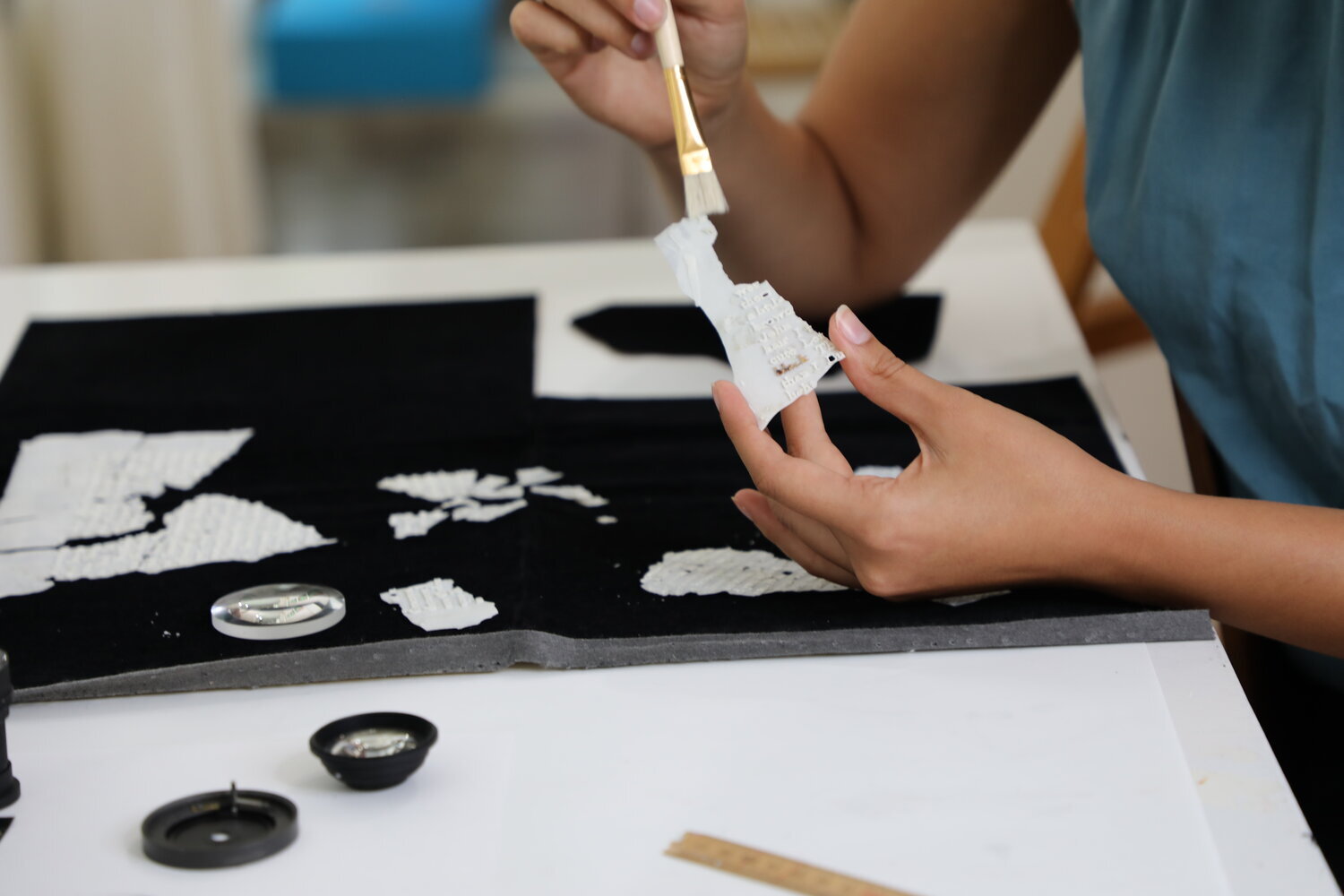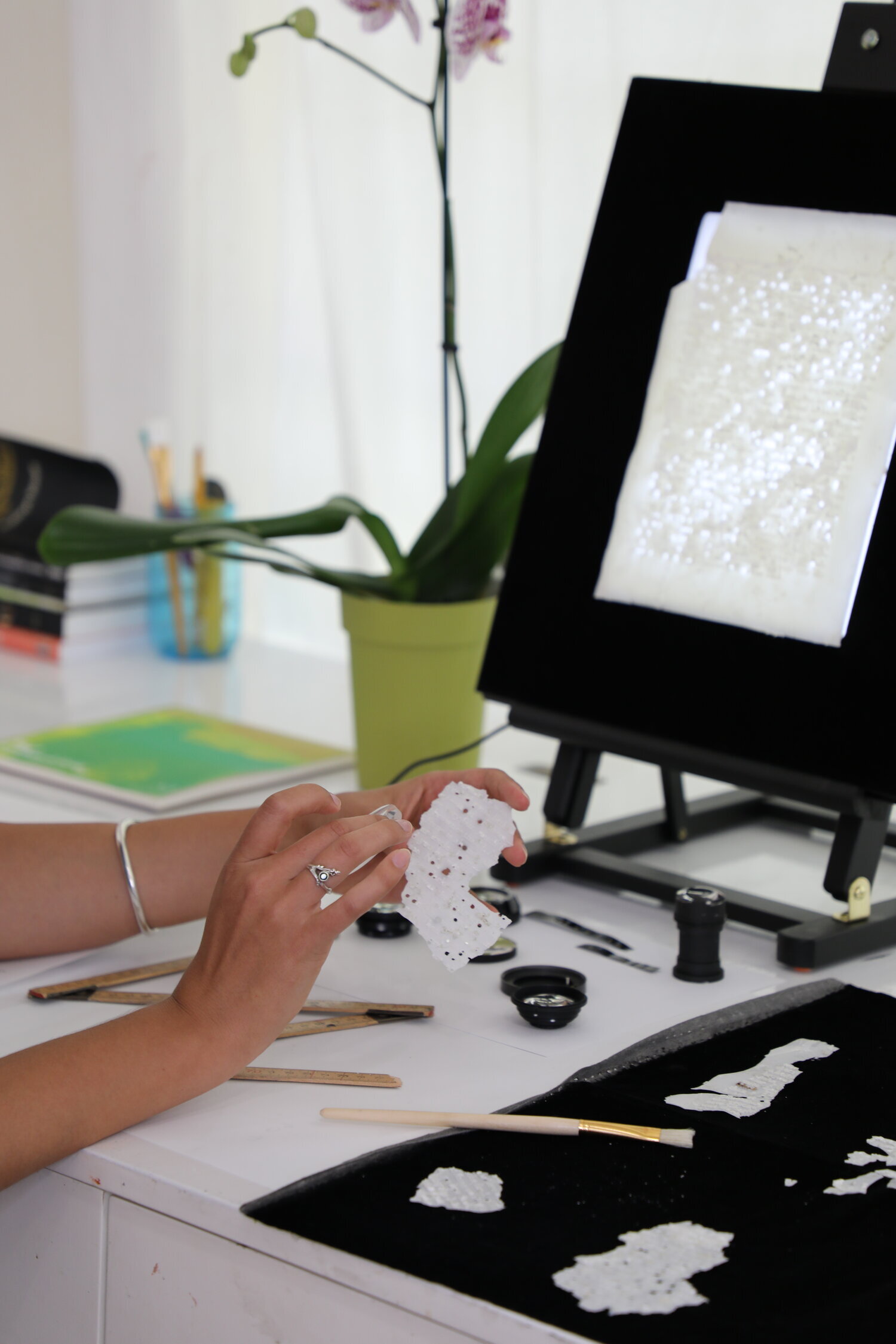September 2021
Lihi Turjeman, Elizabeth M. Webb, Ilona Szwarc
Images and Video courtesy of Alex Nuñez
Words by Nicole Martinez
Brought together by a series of twists and turns wrought by the pandemic, but their practices neatly complement one another: Grounded in memory, place, and identity, Ilona Szwarc, Lihi Turjeman, and Elizabeth Webb explore these ideas through various mediums and with their own particular process. Get to know them in this month’s Fountainhead story.
Ilona Szwarc
Ilona Szwarc’s photographic practice is both an exercise in imagination and a documentary journey into some of the quirkiest threads of American life. Migrating from Poland when she was just a teenager - living first in Texas, and later in New York and Los Angeles, Ilona often felt like the other when navigating her new world.
“I thought that I grew up in a very different way,” she says. “I felt so othered by American women, and I just wanted to have an in.”
She eventually found her entry point with a photo series documenting their obsession with American Girl dolls, a doll that emerged in the 1980s focused on various periods of American History, that eventually introduced the option of creating your own ‘American Girl.’ Ilona found this pop culture phenomenon curious enough to document and deconstruct: Who was the real American Girl, and how did she live?
Her thirst for the answer led her to create her first body of work, the blueprint of which would become a critical part of her process. Ilona put out casting calls in online forums, searching for young women who were willing to be photographed in their homes with their American Girl dolls. These images presented both a satirical and mysterious look at their interior lives, framing the subject and the home life that foregrounded them with equal importance. Later, she used the same methodology to find other subjects - casting calls helped her find the look-alike models that drive her present day work.
Today, Ilona’s work has come full circle: Her current practice involves hiring models who look just like her, posing them in brightly-colored environments and transforming them with Hollywood-inspired makeovers; it’s her way of revisiting the idea of the American girl and whether she fits within that narrative.
“I’ve led myself through a series of transformations, both internal and external, but ultimately this is not my culture,” she says. “I look like the American woman until I speak [with an accent], and then suddenly I’m questioned about my identity.”
At Fountainhead, Ilona is reflecting on a series of works she recently opened at Diane Rosenstein in Los Angeles, while considering her approach for her next body of work.
Lihi Turjeman
Lihi Turjeman is a painter with no paint. Rather than approaching the medium with its traditional tools, Lihi prefers utilizing unconventional materials like adhesives, water, pigments, and wall scraps to create monochromatic, earthy paintings that reveal what’s lying beneath its surface. In her work, the abstract and figurative hold equal tension; to Lihi, there’s “something very physical about the process of painting,” and within it she can explore her ability to expand and even transcend herself. Drawing makes up a big part of her work, as does excavating specific buildings, monuments or sites for their historical and cultural meaning.
A seminal project put Lihi on this particular trajectory; in 2014 in her native Tel Aviv, Lihi began documenting the decay of a crumbling building in the city. She began stripping the layers of paint off its walls, peeling and then shaping them before collaging them onto a canvas using wax and glues. Lihi thought of this practice as creating archaeological remnants of a buidling’s topography, and as a resistance to the act of painting itself.
“This work was an entry point to a practice that finds me searching for a history that lays beneath the surface, and ultimately revealing the lives that have lived within their walls” she says. “Since then I’ve focused my practice on relating to history and monuments, and it’s driven by the space I work in and the space I show in. It’s an expansion and a reduction of what I call painting.”
Most of her works today involve excavating a particular site, and bringing remnants of it back to her studio to warp and pull it out of its own context into a new fantastical realm. Her process involves working with a huge collection of images, residue, and other ephemera that she collages and accumulates onto a canvas, generally preferring to work on one painting at a time. Most importantly, Lihi is focused on the mystical quality of her materials, and unearthing the memories held within them.
At Fountainhead, Lihi is focused on continuing work that will form part of Luna Goldberg’s exhibition, At Memory’s Edge, which will open at Piero Atchugarry gallery in early 2022.
Elizabeth M. Webb
Elizabeth M. Webb’s practice is concerned with her own reckoning with identity, after making a late-in-life discovery about the truth of her family’s lineage. In her twenties, Elizabeth’s father revealed that he had been passing as white. The realization that her own identity had been predicated on an omission for so many years spellbound Elizabeth, who channeled her search for answers into her practice. As a photographer, filmmaker, and sculptor, Elizabeth creates work that elevates obscured stories and histories, and connects them to the idea that identity isn’t static but rather is constantly coming to be.
Much of her work involves turning to landscapes or nature to unearth the memory they hold. “I’m drawn to thinking about what the trees remember, what the soil retains,” she says. “I’m drawn to the way Saidiya Hartman theorizes landscape as a witness to histories that exist outside the archive.”
She transfers information about specific locations in nature - a national park in Georgia, a waterway in Brooklyn, or a forest in Alabama, for example - through a research and documentation process involving film photography and moving images. Later, she will return those archives to the land by burying them and letting them decay. Those remnants are later excavated and displayed as part of immersive installations that make the objects themselves difficult to decipher. That obscurity moves Elizabeth closer to her ultimate objective with her work - the idea that refusing to be identified as one thing or another is an act of resistance in and of itself.
Other works are more autobiographical, like her film For Paradise, documenting her quest to find out more about her Black great grandmother who refused to ever have her picture taken. Sculpture is also an important component to her practice, and often involves a similar process of transferring the original material into a different medium in order to suggest something hidden within its contents. Her Cameo Ground (Children of Paradise) project, for example, involved casting an interview transcript in porcelain and firing it, so that the paper would burn away but the letters on the page would remain imprinted on the porcelain, somewhat illegibly.
Her medium is usually dependent on the subject she’s exploring, which keeps her practice extremely versatile; but it’s all in pursuit of “thinking about how people can evade these human imposed structures, like race, in the same way nature often undermines the structures that we build to invade it,” she says.
At Fountainhead, Elizabeth is researching and preparing images for an upcoming film project, and an immersive installation involving porcelain maps.






























